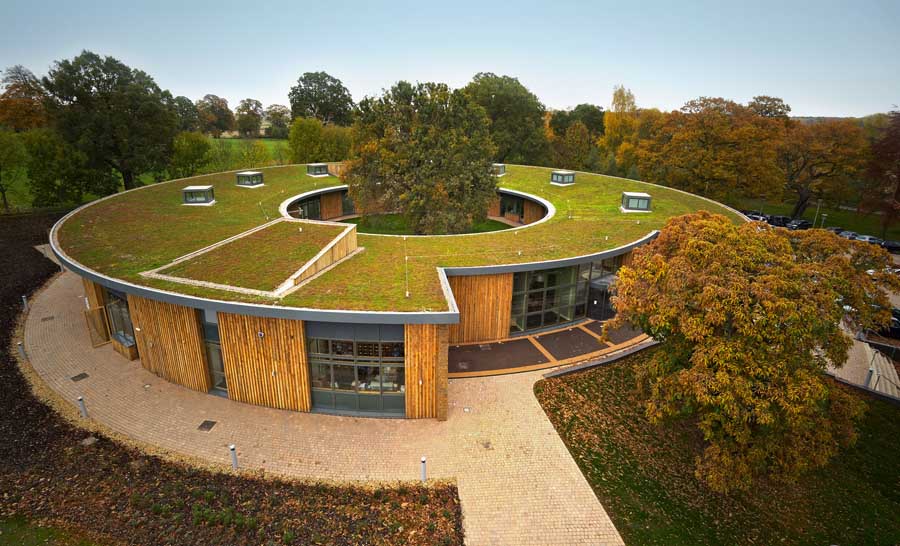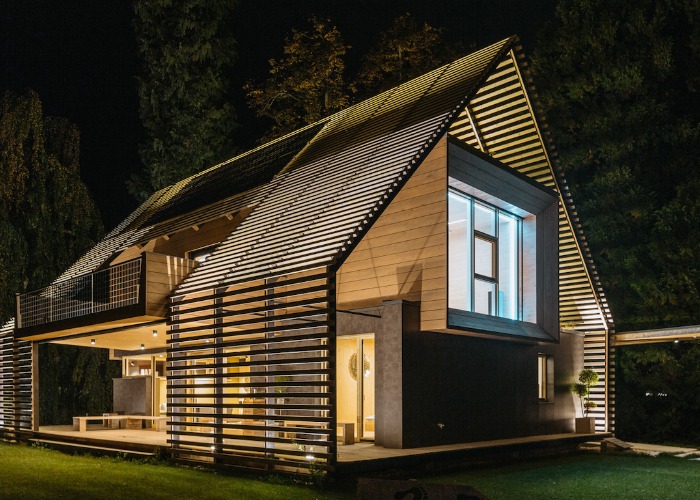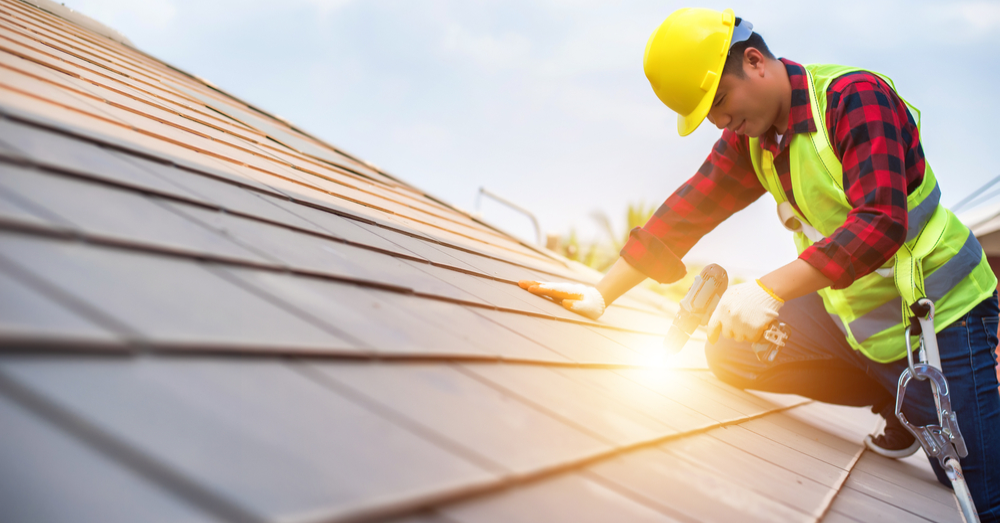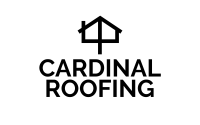The intersection of sustainability and architecture is an ever-evolving landscape, and roofing trends serve as crucial touchstones in this dynamic journey. Architects and designers are at the forefront of reshaping urban skylines with innovative solutions that not only enhance the visual appeal of structures but also contribute significantly to environmental conservation. Green roofs covered with plants are one of the ideas, and at the succulent super show, you can find several different types of flowers that can beautifully decorate the roof. As we explore the multifaceted world of sustainable roofing, it becomes evident that these trends are not fleeting novelties but integral components of a paradigm shift toward a more conscientious built environment.
Green Roofs: A Flourishing Canopy of Sustainability

Green roofs, with their flourishing vegetation, are transforming the architectural narrative. Beyond their aesthetic allure, these living installations actively contribute to environmental well-being. The symbiotic relationship between architecture and nature is exemplified as green roofs absorb carbon dioxide, release oxygen, and provide habitats for various species. As urbanization accelerates, green roofs emerge as oases of biodiversity, countering the often-deleterious impact of concrete jungles.
The insulating properties of green roofs extend their impact on energy efficiency. By moderating temperature fluctuations, these roofs reduce the need for excessive heating or cooling, contributing to a building’s overall sustainability. Architects now approach projects with an ecological lens, viewing green roofs not merely as design elements but as integral components of a structure’s energy performance. The challenge lies in striking a balance between artistic expression and ecological responsibility, where the design seamlessly incorporates nature into the architectural narrative. Roofing services in Colorado Springs already widely apply this method of covering houses.
Solar Shingles: Merging Form and Function
Solar panel maintenance in Hillsborough points out how installing solar panels on your roof is a wonderful thing that is both beautiful and useful. Solar shingles represent a harmonious convergence of aesthetics and functionality in roofing design. Beyond their energy-generation capabilities, these shingles contribute to the democratization of renewable energy. The integration of solar technology into roofing materials opens up new avenues for sustainable power in both urban and rural settings. This innovation is not just about environmental impact; it is about empowering communities to harness clean energy without compromising the visual coherence of their surroundings.
As solar shingles become more affordable and accessible, architects find themselves at the forefront of a transformative movement. The shift toward decentralized energy production challenges traditional notions of power distribution and fosters a sense of energy independence. General surgeons in Texas state that they have applied this to their homes precisely for that small energy production for their own needs. The active voice in architectural discourse echoes the need for more adaptive policies and incentives to accelerate the adoption of solar shingles. This roofing trend not only signals a commitment to sustainability but also a desire for a more equitable energy landscape.
Cool Roofs: Reflecting the Future of Climate Control
Cool roofs, with their reflective surfaces, stand as guardians against the escalating challenges of climate change. The urban heat island effect, exacerbated by vast expanses of concrete and asphalt, is mitigated by the implementation of cool roofs. These reflective surfaces bounce sunlight back into the atmosphere, preventing excessive heat absorption and creating a cooler microclimate. As cities grapple with rising temperatures, architects are turning to cool roofs as integral components of climate-responsive urban planning.
The impact of cool roofs extends beyond temperature regulation. By reducing the demand for air conditioning, these roofs contribute to energy conservation and, subsequently, lower carbon emissions. The active voice in sustainable architecture emphasizes the interconnectedness of climate-responsive design and broader environmental stewardship. As cool roofs become emblematic of responsible urban development, architects play a pivotal role in advocating for their integration into building codes and city planning regulations.
Many roof architects love to wear military dad hats. Military dad hats are a popular choice for roof architects because they are comfortable and durable. They also come in a variety of styles and colors, so roof architects can find a hat that matches their personal taste.
The Integration of Smart Technologies in Roofing: A Technological Horizon

As we navigate the ever-expanding realm of sustainable architecture, another trend emerges on the horizon—the integration of smart technologies into roofing systems. The advent of the Internet of Things (IoT) has ushered in a new era where roofs are not just passive components but active participants in creating efficient and responsive living spaces. Roof installation in New Jersey is dedicated to integrating smart technologies into roof systems. Smart roofing technologies leverage sensors and data analytics to optimize energy use, enhance comfort, and even contribute to overall building security.
The active voice in the technological landscape is resonating with the possibilities that smart roofing offers. Imagine a roof that adapts to weather conditions in real-time, adjusting its properties to maximize energy efficiency. Smart roofing systems can dynamically regulate insulation levels, skylight transparency, and ventilation, ensuring that the interior environment remains comfortable while minimizing energy consumption. This is what attic remodeling in Westchester is used for when organizing the cozy interior of small rooms in a loft. This transformative approach to roofing aligns with the broader goals of sustainability, where every aspect of a building contributes to resource efficiency.
Adaptive Materials: The Morphing Facade of Tomorrow
The integration of adaptive materials in roofing represents a departure from static, conventional construction methods. These materials respond to environmental stimuli, adapting their properties to optimize performance. For example, imagine a roof that changes color based on temperature, helping to reflect or absorb sunlight as needed. The active exploration of adaptive materials introduces an element of dynamism into architectural design, where the building envelope actively interacts with its surroundings.
The active voice in material science is pushing the boundaries of what we traditionally perceive as construction materials. From polymers that change their opacity to metals that alter their conductivity in response to temperature, the possibilities are vast. This not only adds an aesthetic dimension to architecture but also contributes to energy efficiency by optimizing the building’s response to external conditions. The adoption of adaptive materials in roofing reflects a commitment to a future where buildings actively adapt and evolve to meet changing environmental demands. In case you need to be out of the house while roofers are replacing your roof, you could go to a nearby nail salon and get your nails done while you wait. For example, you could get shellac nails in Toronto. Shellac nails are a type of gel manicure that lasts for up to two weeks.
Water Harvesting Roofs: Sustaining Through Innovation
Water Harvesting Roofs stand as a testament to ingenuity in sustainable architecture. Beyond their functional aspects, these roofs actively contribute to water conservation, an ever-pressing concern in the face of global climate challenges. The active integration of water harvesting systems transforms roofs into active participants in the broader ecological balance.
These innovative roofs showcase a dynamic response to environmental needs. Imagine a residential complex where every raindrop that graces the roof becomes a valuable resource actively utilized within the building. The active collection and storage of rainwater not only addresses water scarcity but also serves as a tangible example of how architecture can actively contribute to resource management. If you happen to find yourself feeling under the weather while working on your roof, Mobile IV therapy in Jersey can provide you with the hydration and nutrients you need to feel better fast.
The active adoption of water harvesting roofs extends beyond individual buildings to community-level solutions, creating a network of sustainable water sources. The active voice in sustainable design emphasizes the importance of water efficiency, positioning these roofs as active contributors to a future where water is treated as the precious resource it is. The active pursuit of such innovations is a proactive step towards creating a built environment that actively sustains and enriches the communities it serves.
Biomimicry in Roofing Design: Nature as the Ultimate Mentor
The concept of biomimicry in roofing design is gaining traction as architects and designers actively seek inspiration from nature. Biomimicry involves emulating natural processes and forms to solve human design challenges. In roofing, this translates to structures that mimic the efficiency and resilience found in nature, creating active, adaptive designs that contribute to sustainable architecture.
Consider a roof inspired by the microstructures of leaves, optimizing its surface for self-cleaning and water resistance. The active incorporation of biomimicry in roofing materials can lead to surfaces that actively repel pollutants, resist biological growth, and even harness energy through processes inspired by photosynthesis. By actively engaging with the principles that have evolved in the natural world over millions of years, architects are creating roofs that not only protect but actively contribute to the well-being of the environment. A pediatric dentist in Fayetteville says he installed this particular roof because it blends in so nicely with the environment.
Interactive Rooftop Gardens: Green Spaces in the Sky
Building upon the green roof trend, interactive rooftop gardens take sustainability to new heights—literally. These are not just passive green spaces but active, interactive environments that engage building occupants and the surrounding ecosystem. Imagine a rooftop garden equipped with sensors that monitor plant health, moisture levels, and sunlight exposure. The active integration of technology allows for real-time adjustments, ensuring optimal conditions for plant growth. Car rental in Sarajevo invests in this type of roof in their small town.
The active voice in urban planning is increasingly recognizing the importance of green spaces in densely populated areas. Interactive rooftop gardens not only provide a visual oasis in the midst of concrete jungles but actively contribute to improved air quality, biodiversity, and overall well-being. The active cultivation of green spaces on rooftops transforms them into dynamic ecosystems, fostering a connection between humans and nature in the heart of urban environments.
Resilient Roofing: Active Solutions for Extreme Conditions

In the relentless face of climate change, the imperative for resilient roofing solutions becomes even more pronounced. Architects and engineers are actively pushing the boundaries of traditional construction methods to create roofs that serve as robust shields against the intensifying forces of nature. To make everything look the way they envisioned, they often apply waterjet cutting for materials that are more resistant. The active pursuit of resilience involves the integration of cutting-edge materials, such as impact-resistant composites and fire-retardant coatings, ensuring that roofs actively withstand extreme conditions.
The active voice in resilient roofing extends beyond material innovation to embrace advanced structural design principles. Engineers are actively exploring modular roofing systems that allow for rapid repair or replacement of damaged sections in the aftermath of disasters. The active integration of smart technologies, such as real-time weather monitoring and predictive analytics, empowers buildings with the ability to actively adapt and reinforce their defenses in anticipation of impending extreme weather events.
In the active evolution of resilient roofing, the focus is not just on survival but on rapid recovery and adaptability. The active pursuit of solutions that actively respond to the changing climate landscape positions resilient roofs as active guardians of both property and lives. As the frequency and intensity of extreme weather events escalate, resilient roofing stands as an active testament to human ingenuity and determination to create structures that endure and actively contribute to a safer and more sustainable world.
Closing Thoughts: Active Innovation Shaping Sustainable Skylines
As we reflect on the active trends shaping the future of roofing in sustainable architecture, it becomes evident that innovation is the driving force behind positive change. From the integration of smart technologies and adaptive materials to the embrace of biomimicry, water harvesting, and interactive rooftop gardens, each trend represents an active step toward a more sustainable and resilient built environment. However, dumpster rental in Fort Collins reminds us that it is very important that after you have decided to install such a roof and finish the work on it, dispose of all the waste in the right way because this is also a form of preserving the living environment.
The active engagement of architects, designers, and researchers in pushing the boundaries of what is possible demonstrates a collective commitment to creating not just structures, but active contributors to a healthier planet. In the active pursuit of sustainable roofing solutions, we pave the way for skylines that actively embrace innovation, responsibility, and harmonious coexistence with the natural world. The journey towards a truly sustainable future is marked by these active strides in architecture, where every roof becomes a testament to the active voice of progress in shaping a better tomorrow.

